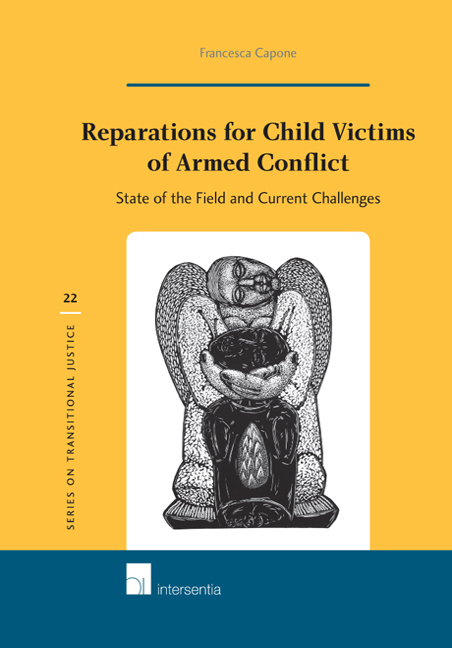Book contents
Chapter 1 - Setting the Scene
Published online by Cambridge University Press: 29 September 2018
Summary
CHILDREN AND REPARATIONS: TOGETHER UNDER THE SPOTLIGHT
According to Tomuschat few would argue that persons suffering a grave breach of their human rights should not have a right to full reparation; even fewer would affirm that children should not be awarded adequate, prompt and effective reparations for the harm suffered, especially as a result of violations perpetrated during or in the aft ermaThof armed conflict, when children are particularly vulnerable and, thus, overexposed to victimisation. Since the approval, in 2005, by the UN General Assembly (‘ General Assembly’) of the Basic Principles and Guidelines on the Right to a Remedy and Reparation for Victims of Gross Violations of International Human Rights and Serious Violations of International Humanitarian Law (‘ Basic Principles and Guidelines’ or ‘UNBPG’) much emphasis has been placed on the existence of individuals ‘reparation claims under international law. Moreover, thanks to the innovative character of the Basic Principles and Guidelines, collective and symbolic reparations have finally also been given proper consideration. Reparation has been accepted as a term wiTha well-established legal meaning, which refers boThto the obligation to repair and the right to claim and obtain redress. According to Redress, ‘reparation’ comprises ‘the wide range of measures that may be taken in response to an actual or threatened violation, including the substance of the relief as well as the procedure to attain it’. Under international law the forms of reparation identified are restitution, compensation and satisfaction. Within the human rights framework rehabilitation and guarantees of non-repetition are also included among the kinds of reparation available for the victims.
Thus far international institutions, such as the Inter-American Court of Human Rights (‘ IACtHR’), have mostly focused on reparations awarded in the aft ermaThof gross human rights violations. The role played by regional human rights bodies, in particular by the IACtHR, has been essential for the development of an innovative and forward-looking approach to reparation, especially in the aft ermaThof mass-scale violations of human rights.
- Type
- Chapter
- Information
- Reparations for Child Victims of Armed ConflictState of the Field and Current Challenges, pp. 1 - 18Publisher: IntersentiaPrint publication year: 2017



